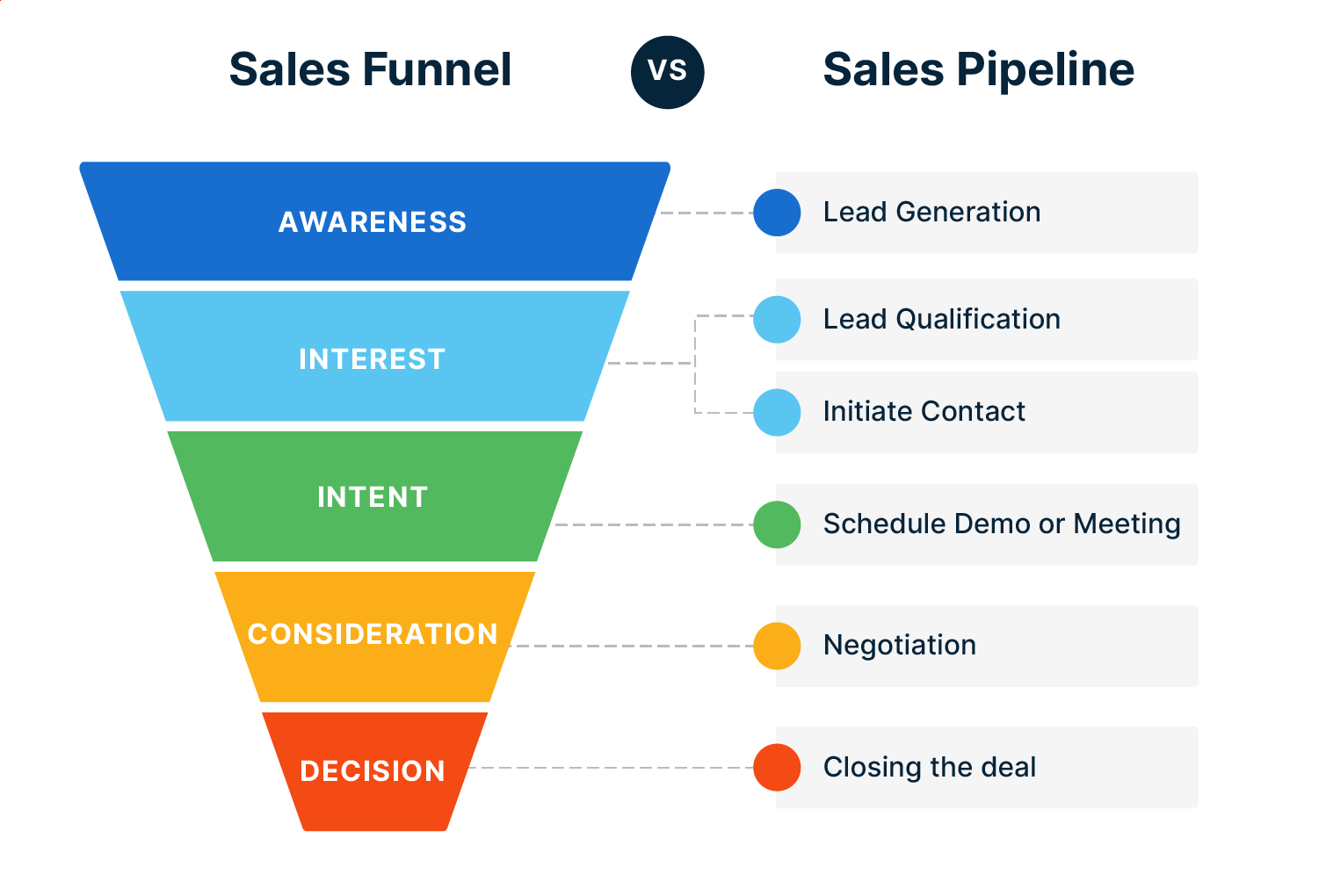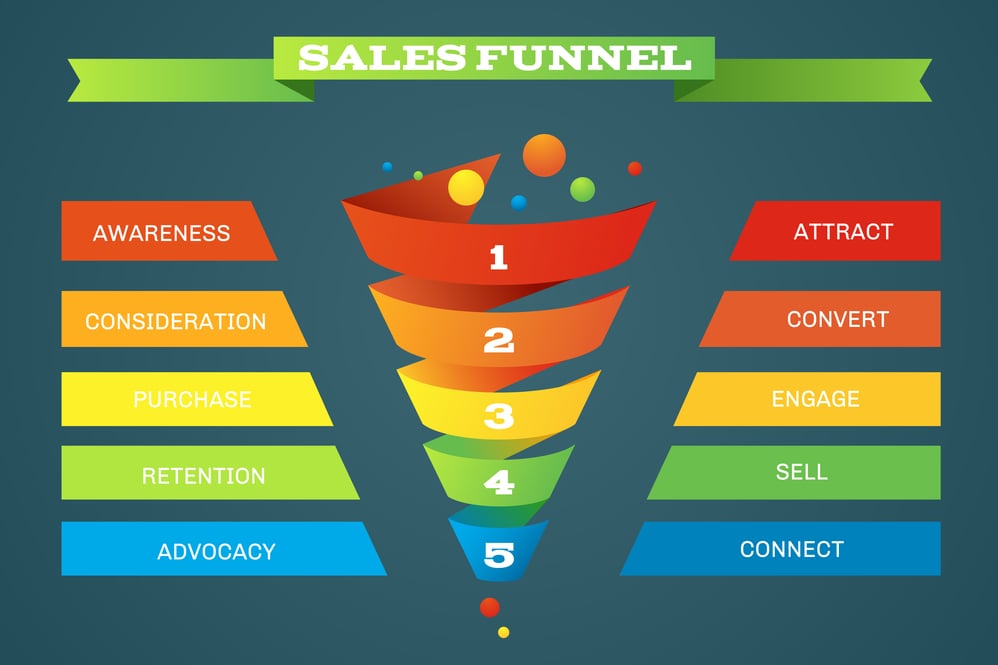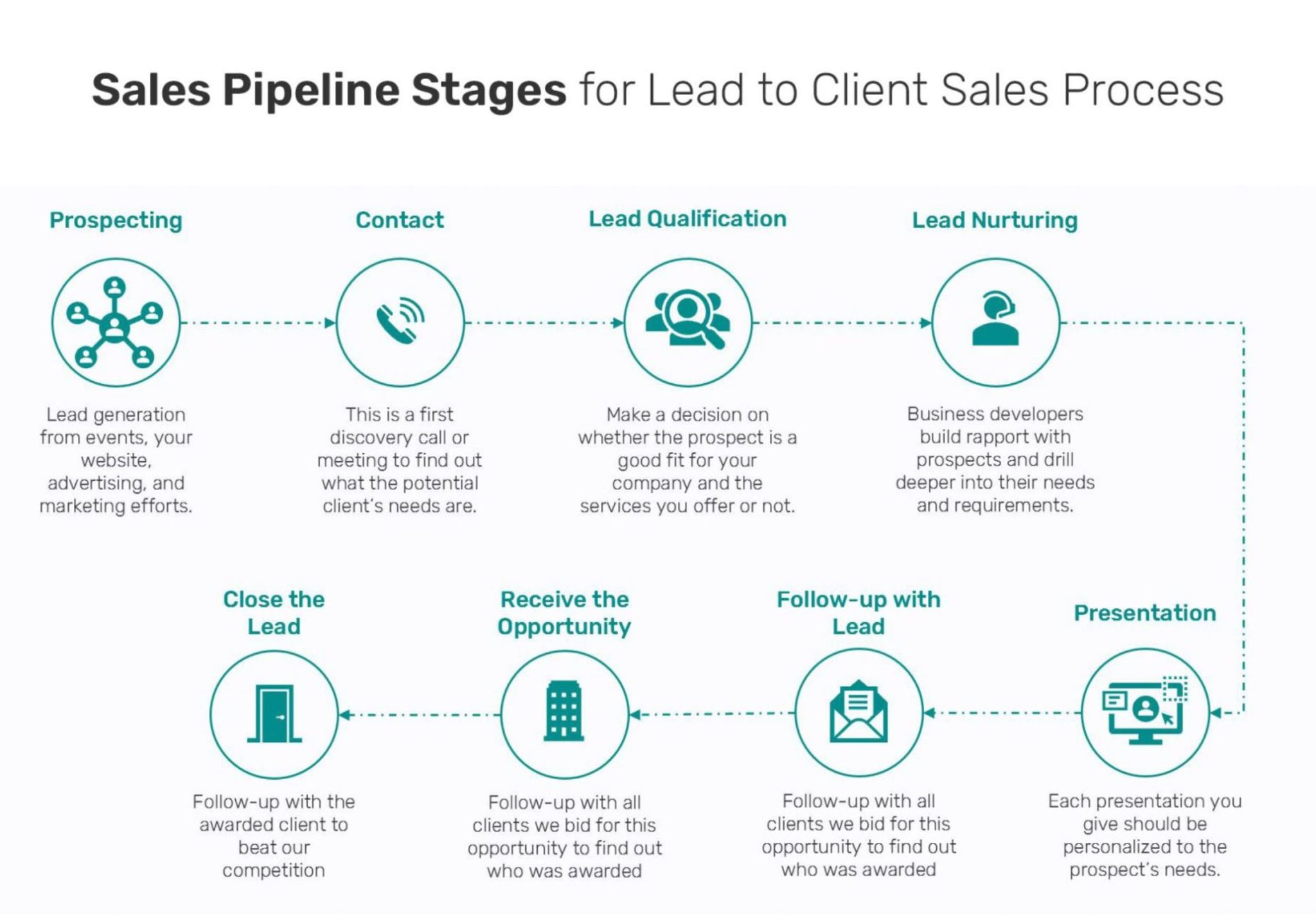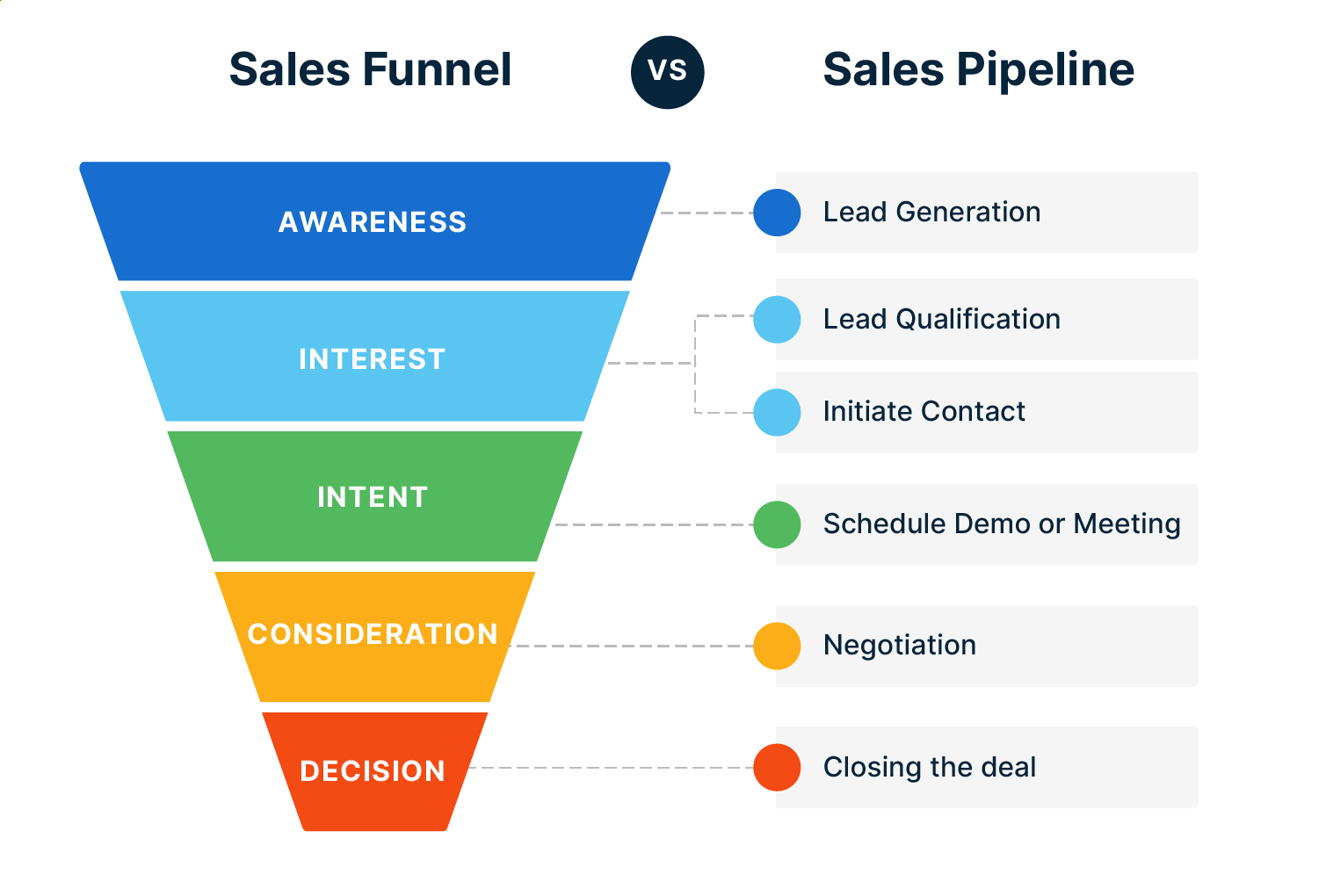Best CRM for Lead Generation: A Comprehensive Guide to Boost Your Sales Pipeline introduces a sophisticated analysis of how customer relationship management systems are transforming the way organizations generate, nurture, and convert leads. This resource provides a detailed exploration of CRM systems, focusing on their evolving role in optimizing sales pipeline management and enhancing team productivity through automation and integration.
In today’s competitive market, leveraging the right CRM is critical for capturing high-quality leads and driving sustainable revenue growth. The guide systematically covers key features, platform comparisons, selection criteria, integration methods, best practices, performance metrics, and forward-looking trends. This comprehensive perspective empowers businesses of all sizes to make informed decisions and capitalize on CRM technology for maximum lead generation efficiency.
Introduction to CRM for Lead Generation
Customer Relationship Management (CRM) systems have become an essential solution in the modern sales landscape, especially for businesses focusing on robust lead generation strategies. As the competition in the digital marketplace intensifies, companies need reliable tools to manage, track, and nurture their leads efficiently. CRM solutions offer a centralized platform for storing lead information, automating outreach, and measuring the effectiveness of multiple touchpoints across the sales pipeline. This streamlining not only reduces manual workload but also enables sales teams to focus on building authentic relationships, leading to higher conversions and sustained revenue growth.
The adoption of CRM technology has significantly transformed how organizations approach lead nurturing and sales pipeline management. By integrating multiple communication channels and automating repetitive tasks, CRM platforms allow businesses to respond to leads in real-time, personalize engagement, and prioritize sales efforts. These advancements have evolved from basic contact management tools into sophisticated analytics engines that provide insights into prospect behavior, sales forecasting, and campaign performance. As a result, businesses leveraging CRM systems can scale their lead generation processes, optimize resource allocation, and maintain consistent follow-up.
CRM Systems as a Core Component in Lead Generation and Sales Pipeline Management
Modern sales environments require precise tracking, detailed analytics, and seamless collaboration between marketing and sales departments. CRM platforms serve as the backbone of these activities by offering an integrated database that captures every interaction with a potential customer—from the initial inquiry to deal closure. This centralized approach prevents data silos and ensures all team members have access to up-to-date information, which is vital for strategic decision-making.
- CRM systems provide real-time visibility into the status of each lead, enabling teams to identify bottlenecks and opportunities within the pipeline.
- Automated workflows within CRM tools ensure timely follow-ups, lead scoring, and task assignments, minimizing the risk of missed opportunities.
- Integration with marketing automation platforms helps synchronize campaigns and sales efforts, resulting in more consistent messaging and improved conversion rates.
Streamlining Lead Nurturing Processes with CRM Tools
The complexity of lead nurturing increases as organizations scale and diversify their sources of leads. CRM tools address this by automating repetitive activities while still allowing personal touches that are vital for relationship building. For example, when a lead downloads an ebook or subscribes to a newsletter, the CRM can automatically segment the contact and trigger a tailored email sequence based on the lead’s interests and stage in the buying journey.
“Effective lead nurturing with CRM is about delivering the right message to the right person at the right time, leveraging data-driven automation without sacrificing personalization.”
Before implementing these strategies, it is crucial to understand the key functionalities that CRM systems offer for lead nurturing:
- Automated email campaigns for drip marketing and retargeting efforts.
- Lead scoring mechanisms that prioritize prospects based on engagement and purchase intent.
- Task management features that assign follow-up calls, meetings, or reminders to sales reps automatically.
- Segmentation tools that organize leads based on demographics, behavior, or source, allowing for more targeted communication.
Evolution of CRM Technology in Sales Environments
CRM technology has witnessed rapid evolution over the past two decades, transitioning from basic contact databases to cloud-based, AI-powered platforms that drive strategic business decisions. Initially, CRM solutions were primarily on-premises software focused on simple contact storage and note-taking. As the internet matured, cloud-based CRM platforms such as Salesforce, HubSpot, and Zoho CRM emerged, offering greater scalability and access from any device.
Today, advanced CRM systems leverage artificial intelligence (AI) and machine learning to provide predictive lead scoring, automated sentiment analysis, and smart recommendations for next-best actions. For example, Salesforce Einstein and HubSpot’s AI tools analyze large datasets to predict which leads are most likely to convert, allowing sales teams to allocate resources efficiently. Real-world use cases, such as the implementation of AI-driven CRM at IBM, have demonstrated measurable improvements in lead response times and deal closure rates.
The following table summarizes the key milestones in CRM technology evolution:
| Era | Key Features | Notable Examples |
|---|---|---|
| 1990s | Basic contact and account management, manual data entry | ACT!, GoldMine |
| 2000s | Cloud adoption, email integration, sales automation | Salesforce, Microsoft Dynamics CRM |
| 2010s | Mobile access, marketing automation, social media integration | HubSpot CRM, Zoho CRM |
| 2020s | AI-powered analytics, predictive scoring, API-driven customization | Salesforce Einstein, HubSpot AI, SugarCRM |
This evolution reflects how CRM systems have become indispensable for businesses aiming to optimize their lead generation and sales pipeline strategies in increasingly complex and data-driven markets.
Key Features of an Effective CRM for Lead Generation
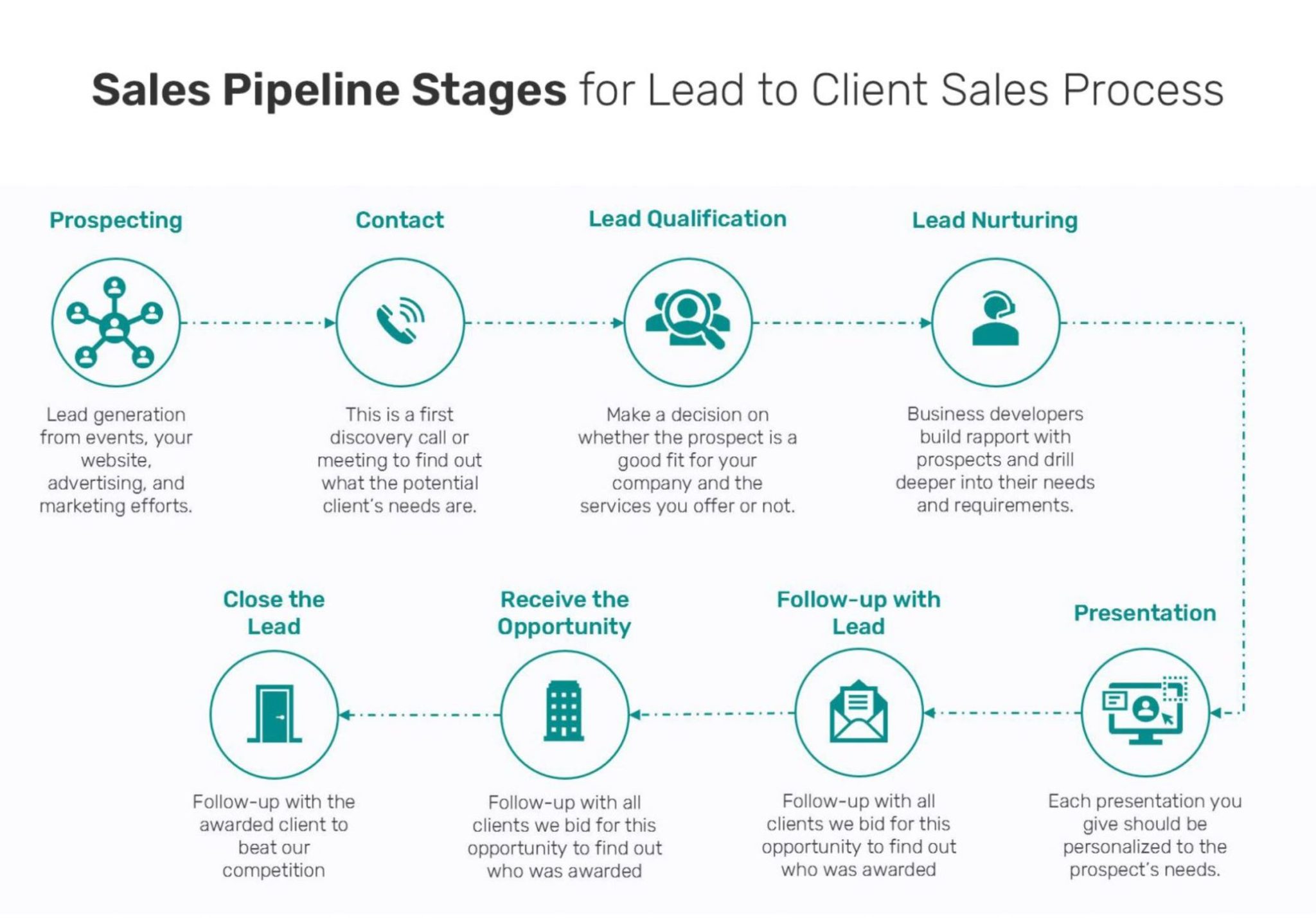
Effective lead generation needs more than just a list of names and numbers. A high-performing CRM (Customer Relationship Management) platform serves as the powerhouse of any sales pipeline by equipping sales teams with tools that help attract, sort, nurture, and convert leads efficiently. Understanding the essential features of a CRM dedicated to lead generation is crucial for businesses aiming to maximize the value of every potential customer.
A robust CRM streamlines workflows and offers actionable insights by integrating with various communication and marketing tools. It empowers sales teams to prioritize leads, automate mundane tasks, and make decisions based on comprehensive analytics, ultimately increasing productivity and conversion rates.
Core Functionalities Vital for Lead Generation
The success of lead generation initiatives hinges on the right set of CRM functionalities. These features must not only facilitate effortless tracking of prospects but also accelerate the journey from engagement to conversion. Below are the core features that define an effective CRM for lead generation.
- Lead Scoring: This feature ranks leads based on their behavior, engagement level, or demographic data, helping sales teams focus on the most promising prospects. For example, a lead who downloads a whitepaper and attends a webinar is scored higher than one who merely visits the website.
- Automation Tools: Automation streamlines repetitive tasks, such as sending follow-up emails or updating lead statuses, freeing up valuable time for sales reps to build relationships. Automated email sequences triggered by lead actions are a common example.
- Analytics and Reporting: Real-time analytics reveal trends, bottlenecks, and performance metrics, enabling data-driven decisions. Dashboards displaying conversion rates or source effectiveness help teams refine their approach.
- Pipeline Management: Visual pipelines offer a clear overview of where each lead stands, from initial contact to closing. This transparency aids in forecasting and resource allocation.
Integrations with Communication and Marketing Tools
Integrating CRM systems with various channels enhances lead nurturing and team efficiency. When a CRM connects seamlessly with email, phone, and marketing applications, the unified platform allows for centralized data management and synchronized workflows.
For instance, integrating email marketing tools enables sales reps to launch targeted campaigns directly from the CRM, track open rates, and automate follow-ups based on recipient actions. Phone integrations allow for click-to-call capabilities and automatic call logging, reducing manual input and missed opportunities. Marketing automation tools connected with the CRM allow for advanced segmentation, retargeting, and multi-channel campaign management—all from a single dashboard.
“Integrations turn a CRM from a static database into a dynamic hub, bridging communication channels and marketing efforts for a holistic view of every lead.”
Summary Table of Must-Have CRM Features
The following table highlights four indispensable CRM features, explaining their functions and providing real-world examples to clarify how they enhance lead generation effectiveness.
| Feature | Description | Example in Use |
|---|---|---|
| Lead Scoring | Automatically ranks leads by assigning points based on actions, profile data, or engagement. | Salesforce uses AI-driven scoring to prioritize leads likely to convert, boosting closure rates. |
| Automation | Streamlines communication, data entry, and nurturing tasks through predefined triggers and workflows. | HubSpot automates personalized email sequences when a lead submits a contact form. |
| Analytics & Reporting | Provides actionable insights into lead performance, campaign effectiveness, and sales metrics. | Zoho CRM generates real-time dashboards for tracking lead source ROI and conversion rates. |
| Integration Capabilities | Connects with third-party email, phone, and marketing platforms for seamless workflow and data sync. | Pipedrive integrates with Mailchimp and Twilio, enabling campaigns and call tracking directly from the CRM. |
Top CRM Solutions for Lead Generation
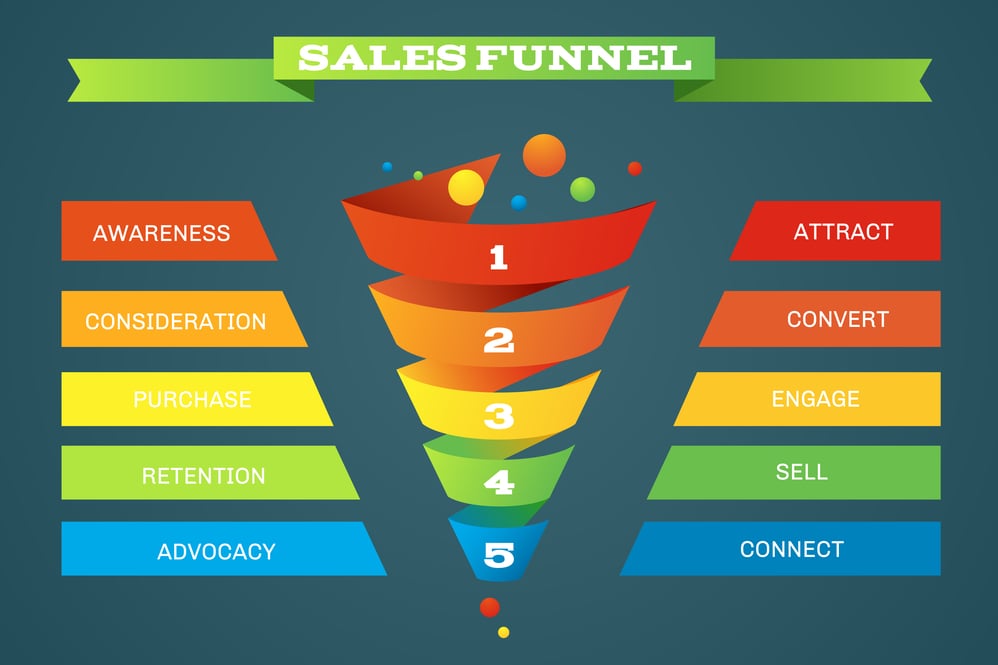
Choosing a CRM (Customer Relationship Management) platform that excels in lead generation is essential for businesses aiming to expand their sales pipelines efficiently. The right CRM not only streamlines lead capture and tracking but also automates nurturing processes, enabling sales teams to respond faster and more effectively to potential customers.
Several CRM solutions stand out for their robust lead management capabilities and are widely adopted by organizations ranging from startups to large enterprises. Each platform offers unique features tailored to specific business needs, helping teams maximize conversion rates and minimize manual workload. Below is an overview of the most popular CRM platforms that are specifically designed to enhance lead generation and management.
Comparison of Leading CRM Platforms for Lead Generation
To provide clarity on choosing the right CRM, the following table compares four of the most recognized CRM systems. The comparison focuses on pricing, key features, and the primary target users, offering a quick reference for decision-making.
| CRM Platform | Pricing (Starting At) | Key Features | Target Users |
|---|---|---|---|
| HubSpot CRM | Free; Paid plans from $45/month | Lead capture forms, email tracking, pipeline management, automated workflows, robust integrations | Startups, SMBs, marketing-driven teams |
| Salesforce Sales Cloud | $25/user/month (Essentials plan) | Customizable dashboards, advanced lead scoring, AI-powered insights, automation, mobile app | Growing businesses, large enterprises, data-driven organizations |
| Zoho CRM | Free; Paid plans from $14/user/month | Omnichannel communications, automatic lead assignment, workflow automation, advanced analytics | Small to medium businesses, cost-conscious teams |
| Pipedrive | $14.90/user/month | Visual sales pipeline, lead web forms, activity reminders, sales reporting, AI sales assistant | Sales-focused teams, fast-growing startups |
Distinctive Approaches to Lead Capture and Tracking by Major CRMs
Modern CRM solutions deploy a variety of innovative methods to boost lead acquisition and streamline tracking. Understanding each platform’s unique approach can help organizations align CRM features with their sales strategies for optimal results.
- HubSpot CRM: Offers a frictionless lead capture experience through customizable web forms and live chat widgets. The platform automatically logs interactions and enriches contact profiles with publicly available data, making it easier to prioritize follow-up actions.
- Salesforce Sales Cloud: Utilizes AI-driven lead scoring, predictive analytics, and customizable automation rules. Salesforce’s integration ecosystem allows businesses to capture leads from multiple touchpoints, while its mobile app supports on-the-go lead updates.
- Zoho CRM: Centralizes multichannel lead capture—email, social media, live chat, and web forms—into one interface. Its assignment rules and workflow automation ensure each lead is routed to the right salesperson instantly.
- Pipedrive: Features a highly visual and intuitive sales pipeline where leads are captured directly through integrated web forms or email. Automated activity reminders and an AI-powered assistant help sales reps track every interaction and close deals efficiently.
A best-in-class CRM system not only organizes and tracks leads but actively accelerates the sales cycle by automating follow-ups and delivering actionable insights.
Each of these CRM platforms brings a distinct value proposition, ensuring that businesses of all sizes can find a solution that fits their unique lead generation and sales pipeline management needs. By leveraging these tools, companies can minimize manual data entry, increase team productivity, and ultimately convert more prospects into loyal customers.
How to Choose the Right CRM for Your Lead Generation Needs
Selecting the ideal CRM system is a pivotal decision that directly impacts the efficiency of your lead generation strategy and the health of your sales pipeline. Different businesses require different CRM features, so matching a CRM’s capabilities to your company’s size, industry focus, and unique sales workflow is critical for achieving sustainable growth and maximizing ROI.
A thoughtful approach to CRM selection involves understanding your business context, evaluating available solutions through a clear framework, and ensuring your chosen platform can adapt as your organization evolves. Strong compatibility between your operational needs and the CRM system leads to smoother integration, higher adoption rates among teams, and more effective lead management.
Criteria for Selecting CRM Based on Company Size, Industry, and Sales Workflow
The CRM market offers a vast array of tools tailored for specific business profiles. When determining suitability, companies must consider how well a CRM aligns with operational scale, sector demands, and day-to-day sales activities.
-
Company Size:
Small businesses typically benefit from CRMs that emphasize simplicity, cost-effectiveness, and ease of use, such as HubSpot CRM or Zoho CRM. Enterprises often require advanced features, robust analytics, and complex automation, making Salesforce and Microsoft Dynamics 365 more appropriate choices. -
Industry-Specific Needs:
Real estate, e-commerce, financial services, and manufacturing each have distinct sales cycles and compliance requirements. For instance, property management firms may prefer CRMs like Pipedrive or Propertybase that offer pipeline visualization and integration with listing platforms, while insurance agencies may need built-in policy tracking and regulatory compliance features. -
Sales Workflow Compatibility:
The CRM must reflect and enhance your team’s existing sales process—whether it’s lead qualification, nurturing, multi-stage deal tracking, or automated follow-ups. If your workflow relies heavily on outbound sales, prioritize CRMs with advanced lead scoring and email campaign automation. For inbound-driven organizations, look for seamless marketing integration and data capture tools.
Step-by-Step Procedure for Evaluating CRM Options
A systematic evaluation process helps organizations avoid costly missteps and ensures the chosen CRM truly addresses lead generation priorities.
Follow these sequential steps to evaluate CRM platforms effectively:
-
Document Business Requirements:
Map out critical workflows, integration needs, user roles, and must-have features. For example, a startup with a small sales team may prioritize mobile functionality and basic reporting, whereas a regional distributor may require territory management tools and advanced analytics. -
Shortlist Relevant Solutions:
Based on your requirements, filter CRM vendors that specialize in your industry or business size to streamline your research process. -
Request Demonstrations and Free Trials:
Engage directly with vendors for live product demonstrations and access trial versions. Real-world testing helps uncover usability issues and reveals how well the platform integrates with your existing tech stack. -
Collect Team Feedback:
Involve end-users from different departments—sales, marketing, and customer service—to assess usability, training needs, and workflow alignment during trial periods. -
Evaluate Cost and ROI:
Compare pricing models, onboarding costs, and the long-term value relative to projected gains in lead conversion and productivity. -
Review Security and Compliance:
Especially important for industries handling sensitive data, such as healthcare or finance. Ensure the CRM meets regulatory requirements like GDPR or HIPAA where applicable.
A structured evaluation process empowers businesses to choose a CRM that not only fits current needs but also scales with future growth.
Assessment of Scalability and Customization Capabilities in CRM Platforms
As companies grow, their lead generation requirements become more complex. Scalability and customization are essential to ensure the CRM remains a valuable asset over time.
When assessing scalability and customization, companies should focus on these key elements:
-
User Capacity:
Confirm that the CRM can accommodate an expanding user base without significant performance degradation or prohibitive cost increases. -
Custom Fields and Modules:
The ability to tailor data fields, workflow stages, and reporting dashboards is crucial for adapting the CRM to evolving processes. For example, a B2B software firm may need to customize opportunity stages or add unique data points for SaaS subscription management. -
Integration Ecosystem:
Flexible CRMs support integrations with marketing automation, accounting software, and communication tools, ensuring seamless information flow across business units. Salesforce, for instance, boasts a vast marketplace (AppExchange) offering integrations for nearly every business function. -
API Access and Developer Tools:
The presence of robust APIs and developer resources enables organizations to build custom automations and connect proprietary systems as the business expands. -
Pace of Feature Updates:
Evaluate how frequently the CRM vendor rolls out enhancements or new features, which can be a crucial indicator of future-readiness.
CRMs with strong scalability and customization ensure that growing businesses do not outgrow their technology investment, supporting sustainable lead generation and customer relationship management.
Integrating CRM with Existing Sales and Marketing Tools
In today’s competitive business landscape, seamless integration between your Customer Relationship Management (CRM) platform and other sales and marketing tools is essential. Proper integration streamlines lead management, enhances data accuracy, and boosts the effectiveness of sales pipelines by ensuring that information flows smoothly between different platforms used across your organization.
Integrating CRM solutions with tools like email marketing platforms, social media management suites, and lead capture forms enables your sales and marketing teams to access up-to-date lead information, respond efficiently, and automate routine tasks. This connectivity is a critical factor for businesses aiming to drive higher conversion rates and improve collaboration between departments.
Syncing CRM with Business Tools for Enhanced Lead Flow
Synchronizing CRM software with existing business tools eliminates manual data entry and prevents information silos. This process allows every team member, from marketing strategists to sales representatives, to work with consistent and up-to-date lead data, ultimately accelerating response times and improving the customer experience.
- Syncing your CRM with email marketing platforms automatically imports new leads from newsletter sign-ups, enabling immediate follow-up and targeted nurturing campaigns.
- Connecting social media tools ensures that interactions, messages, and inquiries from potential leads are instantly captured in the CRM, providing sales teams with valuable insights for personalized engagement.
- Integration with website forms and landing pages enables real-time lead capture, reducing the risk of losing potential clients due to delayed or missed responses.
“A robust integration strategy ensures that no lead falls through the cracks, and every interaction is logged, analyzed, and acted upon for maximum pipeline efficiency.”
Automating Lead Transfer from Marketing Campaigns to CRM
Automated lead transfer is vital for scaling lead generation efforts and maintaining high-quality data. This process involves configuring your systems so that leads generated from various marketing campaigns—such as pay-per-click advertisements, webinars, and content downloads—are instantly and accurately imported into your CRM.
- Utilizing marketing automation platforms, businesses can create workflows that push new leads directly to the CRM, assigning appropriate tags, sources, and campaign information.
- Auto-segmentation of leads based on campaign responses allows sales teams to prioritize follow-up activities and tailor outreach strategies.
- Real-time notifications and task assignments help ensure that leads are engaged promptly, reducing response times and increasing conversion likelihood.
Consistent automation not only accelerates lead processing but also standardizes data entry, minimizing human error and enhancing reporting accuracy.
Types of CRM Integrations and Their Key Benefits
The integration ecosystem for CRM platforms is vast, with various types catering to diverse business needs. Understanding these integration types helps organizations select the best approach to support their lead generation and sales operations.
The table below Artikels common CRM integrations and the benefits they offer:
| Integration Type | Example Tools | Key Benefits |
|---|---|---|
| Email Marketing Integration | Mailchimp, Constant Contact | Automates lead import from campaigns, enables nurture sequences, tracks email engagement within CRM. |
| Social Media Integration | Hootsuite, Buffer | Captures social interactions as leads, tracks brand mentions, and centralizes communication records. |
| Web Form & Landing Page Integration | Typeform, Unbounce | Direct lead capture from digital touchpoints, instant CRM entry for faster follow-ups, improved data quality. |
| Customer Support Integration | Zendesk, Freshdesk | Syncs support tickets with lead records, provides context for sales teams, enhances cross-department collaboration. |
| Sales Automation Integration | Salesforce Sales Cloud, Pipedrive | Automates lead assignment, scoring, and follow-up reminders; streamlines sales processes. |
| Analytics & Reporting Integration | Google Analytics, Tableau | Aggregates lead source data, tracks campaign ROI, supports data-driven decision-making. |
Integrating CRM platforms with your existing sales and marketing tools builds a connected ecosystem that maximizes lead generation, ensures consistent communication, and empowers your teams to deliver results efficiently.
Best Practices for Using CRM in Lead Generation
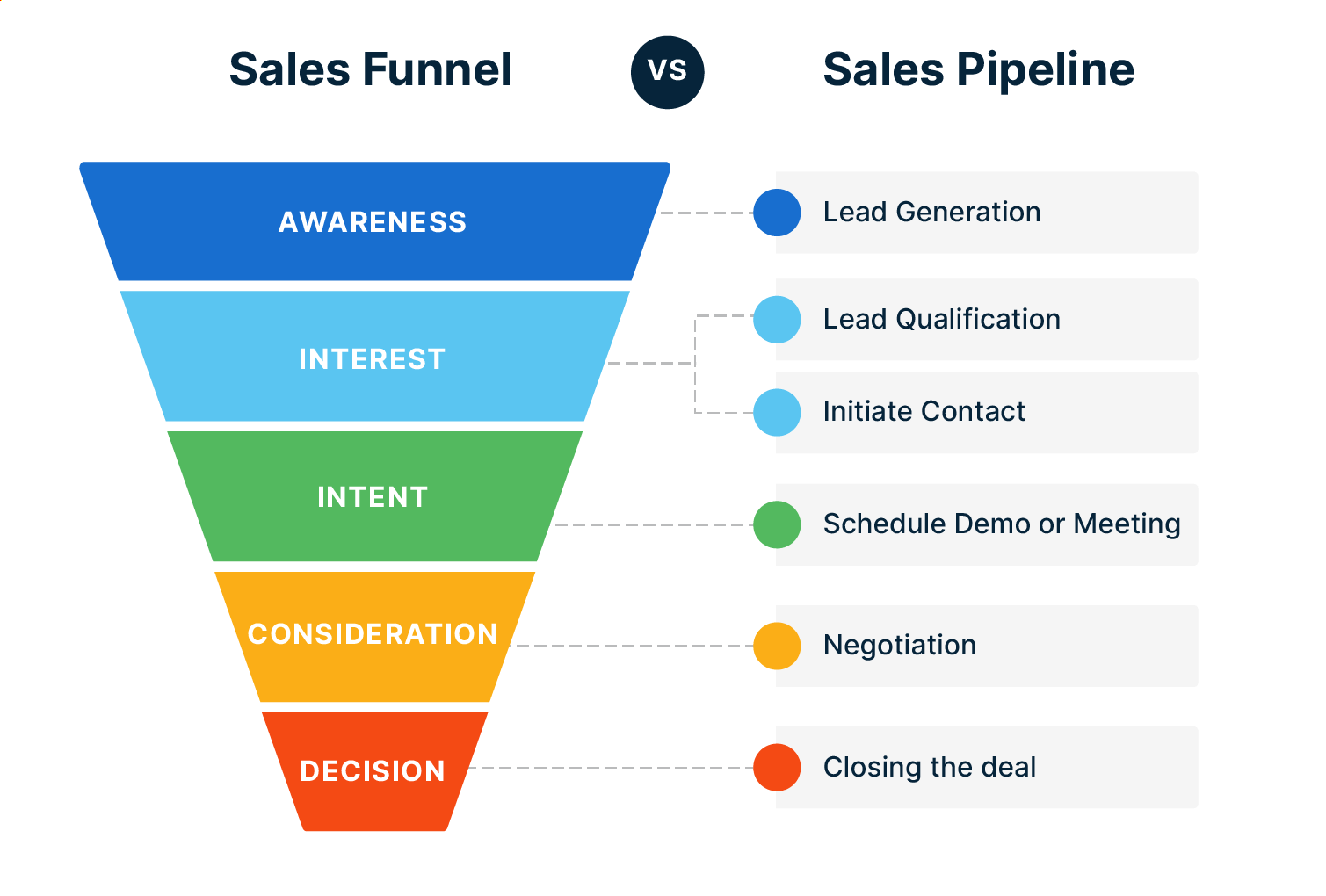
Adopting a CRM system is only the first step in transforming your lead generation process. To fully leverage its capabilities, businesses should implement targeted strategies that maximize lead capture, nurture relationships, and prevent valuable leads from slipping through the cracks. Integrating proven practices into your CRM usage will translate into a healthier, more productive sales pipeline.
An effective approach to CRM lead management combines automation, precise segmentation, and streamlined workflows. Utilizing these strategies not only increases lead conversion rates but also ensures that every prospect receives timely and relevant engagement from your team.
Strategies to Maximize Lead Capture and Conversion in CRM Platforms
Consistent and strategic usage of CRM platforms can vastly improve your ability to capture new leads and convert them into customers. The following tactics are designed to help businesses extract maximum value from their CRM:
- Implement dynamic lead scoring to prioritize prospects based on engagement signals, demographic fit, and buying intent. This helps sales teams focus their efforts on leads most likely to convert.
- Automate lead assignment by setting up rules that route inquiries to the right sales representative based on territory, industry, or product interest.
- Embed web forms and chatbots directly into landing pages and digital campaigns, ensuring all captured data flows seamlessly into the CRM for instant follow-up.
- Use multi-channel tracking to capture leads from email, social media, events, and website interactions, creating a unified prospect profile in the CRM.
- Monitor lead source performance to identify which channels deliver the highest quality leads, allowing for data-driven marketing budget allocation.
Effective Lead Nurturing Tactics Using Automation and Segmentation
Nurturing leads effectively within a CRM requires a tailored approach, leveraging automation and segmentation to deliver personalized experiences. The following points illustrate actionable tactics to foster engagement with prospects:
- Segment leads by criteria such as industry, company size, behavior, or lifecycle stage, enabling targeted messaging that resonates with each group.
- Set up automated email workflows that trigger based on lead actions—for example, sending educational content after a demo request or follow-up reminders if a proposal isn’t opened.
- Utilize drip campaigns to maintain consistent communication with leads over time, ensuring your brand remains top-of-mind even during longer sales cycles.
- Score leads automatically based on their responsiveness to nurture sequences, advancing highly engaged contacts to the sales team for direct follow-up.
- Personalize communications using dynamically inserted lead data (such as name, company, or previous interactions) to boost engagement rates.
“Effective lead nurturing is not about sending more messages, but about sending the right message at the right time to the right person, using automation as a strategic enabler.”
Examples of Real-World Workflows That Increase Efficiency and Reduce Lead Leakage
Implementing robust workflows within a CRM can drastically minimize the risk of losing leads and enhance overall efficiency. The examples below demonstrate how structured processes can optimize lead management:
- Automated Lead Qualification Workflow: When a new lead fills out a website form, the CRM immediately scores the lead based on predefined criteria (such as company size and readiness to buy). High-scoring leads are automatically assigned to a sales executive, while those needing further nurturing are entered into an educational email series. This process, used by companies like HubSpot, ensures no promising leads go unattended.
- Sales Handoff and Notification Workflow: Upon reaching a certain lead score, the CRM notifies both the assigned sales rep and their manager. The lead’s contact history and profile are automatically shared, and a task is created for the rep to schedule a call within 24 hours. Organizations like Salesforce leverage this practice to reduce response times and increase conversion rates.
- Re-Engagement Workflow for Dormant Leads: Leads that have shown interest but stalled in the pipeline are automatically segmented and entered into a re-engagement campaign. Personalized messages referencing their previous activity or interest help rekindle the conversation. This strategy, employed by SaaS firms such as Zendesk, has been shown to recover up to 15% of dormant leads.
A visual illustration of these workflows would showcase a flowchart beginning with lead capture, moving through automatic scoring and segmentation, assignment to sales or marketing tracks, and culminating in targeted actions like calls, emails, or re-engagement efforts. Each step is interconnected, demonstrating how automation reduces manual intervention and prevents leads from being overlooked at any stage.
Measuring Success: CRM Metrics for Lead Generation: Best CRM For Lead Generation: A Comprehensive Guide To Boost Your Sales Pipeline
Tracking the right metrics is vital to understanding and improving the effectiveness of your lead generation efforts within a CRM system. By focusing on actionable data points, businesses can gain deep insights into what drives their sales pipeline and which strategies generate the most valuable leads. Consistently monitoring these indicators not only helps in evaluating past performance but also guides future lead generation initiatives for sustained growth.
Modern CRM platforms are equipped with robust analytics and reporting features that allow businesses to visualize trends, identify bottlenecks, and optimize lead management processes. Leveraging these capabilities ensures that every step—from capturing leads to converting them into customers—is measured and continuously improved.
Essential CRM Metrics for Lead Generation
To ensure every lead is tracked effectively and the sales process remains transparent, several key performance indicators should be routinely monitored. These KPIs provide a comprehensive overview of the health and progression of your lead generation pipeline.
Below is an HTML table that summarizes the main lead generation KPIs, their definitions, and their impact on sales pipeline growth:
| KPI | Definition | Impact on Sales Pipeline Growth |
|---|---|---|
| Number of New Leads | Total count of new leads captured within a specific timeframe. | Directly correlates with opportunities for sales team to nurture new prospects. |
| Lead Conversion Rate | Percentage of leads that move from initial capture to qualified or sales-ready status. | Indicates effectiveness of lead qualification and nurturing strategies. |
| Average Lead Response Time | Average time taken by sales or marketing to follow up with a new lead after capture. | Faster response times often result in higher conversion rates and improved lead engagement. |
| Cost per Lead (CPL) | Total spend on lead generation divided by the number of leads acquired in a given period. | Helps assess the cost-effectiveness of marketing campaigns and channels. |
| Lead Source Effectiveness | Analysis of which sources (e.g., web forms, ads, events) generate the highest quality leads. | Enables resource allocation to the most productive lead channels. |
| Lead Nurture Rate | Percentage of leads that receive ongoing engagement activities, such as emails or calls. | Reflects the consistency and quality of lead nurturing efforts, impacting conversion rates. |
| Pipeline Velocity | The speed at which leads move through the sales funnel stages. | Faster velocity means quicker revenue realization and fewer stalled opportunities. |
“Effective measurement of CRM KPIs transforms raw data into actionable insights, helping businesses maximize their sales pipeline and overall growth.”
Optimizing Lead Generation Strategies Using CRM Reporting Tools
CRM reporting tools empower teams to make data-driven decisions by providing real-time visibility into lead generation performance. Utilizing the analytics dashboards and customizable reports available in platforms like Salesforce, HubSpot, or Zoho CRM, users can identify trends, monitor campaign outcomes, and detect areas needing improvement.
Through regular analysis of CRM data, sales and marketing managers can:
- Pinpoint which campaigns or sources yield the highest quality leads and replicate successful strategies for future efforts.
- Detect bottlenecks in the lead management process, such as delayed follow-ups, allowing for swift corrective actions.
- Compare lead conversion rates across different segments, products, or territories, supporting more targeted outreach.
- Monitor cost per lead and optimize allocation of budget to channels that deliver better ROI.
- Set up automated alerts for key metrics, ensuring timely responses to fluctuations in performance.
Detailed visualizations, such as funnel charts or heatmaps, provide clear illustrations of where leads drop off or progress through the pipeline. For example, a company noticing a slowdown at the proposal stage can analyze response times and engagement rates, then adjust follow-up sequences accordingly. By refining these processes, businesses can steadily improve lead-to-customer conversion rates and accelerate pipeline growth.
Overall, the strategic use of CRM metrics and reporting capabilities is integral to elevating lead generation outcomes and sustaining competitive advantage in today’s dynamic sales environments.
Real-World Use Cases and Success Stories
Many businesses across industries have transformed their lead generation and sales outcomes by adopting CRM systems tailored to their needs. By integrating CRM solutions, companies have streamlined lead management, improved collaboration, and made data-driven decisions that drive revenue growth. The following real-world case studies illustrate how organizations overcame common sales pipeline challenges through CRM implementation and reveal the tangible impact on their business results.
Case Study: SaaS Startup Accelerates Sales Pipeline Efficiency, Best CRM for Lead Generation: A Comprehensive Guide to Boost Your Sales Pipeline
A fast-growing SaaS startup in Jakarta faced bottlenecks in tracking and following up with potential clients. Their manual process using spreadsheets led to lost leads and inconsistent communication. After implementing a cloud-based CRM, the company experienced a dramatic transformation in their lead generation process.
-
Challenges Faced:
- Leads lost due to poor tracking and lack of follow-up reminders
- Sales team working in silos with duplicated outreach
- Difficulty measuring which lead sources generated the most qualified prospects
-
CRM Solution:
- Centralized lead database with automated assignment and status updates
- Integration with website forms and LinkedIn for automatic lead capture
- Real-time dashboards for monitoring lead sources and sales performance
-
Results After CRM Adoption:
- Lead response times decreased from 48 hours to less than 6 hours
- Sales qualified leads increased by 40% within 3 months
- Revenue from new clients grew by 30% in the following quarter
“By automating lead tracking and follow-up with our CRM, we never let a potential client slip through the cracks. Our sales team became more productive, and we saw results almost immediately.” — Head of Sales, SaaS Startup Jakarta
Case Study: Retail Chain Enhances Customer Engagement with CRM
A prominent retail company with dozens of outlets in Indonesia struggled to manage and nurture the large volume of incoming leads from both online and offline channels. After deploying a CRM platform integrated with their e-commerce site and POS systems, they significantly improved their ability to engage, qualify, and convert leads into loyal customers.
-
Challenges Faced:
- Fragmented customer data across multiple sales channels
- Limited visibility into customer preferences and purchase history
- Low conversion rates from first-time inquiries to repeat buyers
-
CRM Solution:
- Unified customer profiles combining online and in-store data
- Automated lead nurturing campaigns based on purchase behavior
- Personalized follow-up messages and exclusive offers sent via email/SMS
-
Transformation After CRM Adoption:
- Customer engagement rates rose by 50% within 6 months
- Repeat purchase rate increased by 25% across all channels
- Significant reduction in manual data entry and human error
“The ability to track every customer interaction and tailor our outreach boosted not only our sales but also our customer satisfaction. CRM integration was a game-changer for our business.” — Chief Marketing Officer, National Retail Chain
Case Study: B2B Service Provider Optimizes Lead Qualification Process
A B2B consulting firm servicing manufacturing clients in Surabaya found it challenging to prioritize and qualify leads effectively. Prior to CRM adoption, sales reps spent too much time on leads that didn’t fit their ideal customer profile. The implementation of an intelligent CRM system with lead scoring revolutionized their approach.
-
Challenges Faced:
- Time wasted on low-quality leads with minimal conversion potential
- No standardized process for lead qualification or assignment
- Difficulty measuring ROI from different lead generation channels
-
CRM Solution:
- Automated lead scoring based on demographic, firmographic, and behavioral data
- Seamless integration with marketing automation tools for nurturing campaigns
- Comprehensive analytics for tracking lead conversion and channel effectiveness
-
Impact on Lead Management and Sales Results:
- Sales team focused 70% more time on high-priority leads
- Deal closing rate improved by 20% within two quarters
- Clear insights into top-performing lead sources, enabling smarter marketing investments
“CRM-driven lead scoring allowed us to focus our resources where it mattered most, leading to shorter sales cycles and higher conversion rates.” — Managing Director, B2B Consulting Firm
Future Trends in CRM for Lead Generation
As businesses continue to compete in increasingly digital and data-driven markets, Customer Relationship Management (CRM) systems are evolving rapidly to meet the demands of modern lead generation strategies. The future of CRM is being shaped by the integration of advanced technologies and a greater emphasis on predictive, automated, and personalized experiences across the sales pipeline. These innovations will unlock new opportunities for sales teams to nurture leads more efficiently, forecast conversion potential, and deliver targeted engagement that dramatically improves results.
Integration of Artificial Intelligence and Predictive Analytics in CRM
Artificial Intelligence (AI) and predictive analytics are transforming how organizations manage, qualify, and convert leads. With AI-powered CRMs, businesses gain the ability to analyze massive volumes of behavioral, transactional, and demographic data in real time. This automation enables sales teams to focus on high-priority leads identified by predictive scoring models, which estimate the likelihood of conversion based on historical patterns and current engagement signals.
For example, Salesforce’s Einstein AI leverages past sales data and lead interactions to automatically recommend next-best actions and highlight leads most likely to close, reducing the guesswork and manual effort typically inherent in lead management. Similarly, HubSpot’s predictive lead scoring uses machine learning to refine how incoming leads are prioritized, ensuring follow-up happens at the optimal moment.
“AI-enabled CRMs will not only automate repetitive lead management tasks but also provide actionable insights, enabling sales pipelines to become more efficient, data-driven, and proactive.”
Personalization and Hyper-Targeting in Lead Nurturing
Modern CRMs are moving beyond generic automation by embracing hyper-personalization in communication and content delivery. By leveraging integrated data sources—including website behaviors, social media interactions, and email responses—next-generation CRMs craft tailored experiences for each lead. This approach increases engagement rates and improves the quality of leads moving through the pipeline.
Consider a scenario where a B2B software company uses its CRM to track which features of a product potential clients are viewing on the company website. The CRM then triggers personalized emails containing case studies relevant to those specific interests, greatly increasing the odds of conversion. This level of targeted engagement is only possible with advanced segmentation and personalization engines within the CRM ecosystem.
- Real-time content recommendations based on prospect interactions.
- Automated email campaigns tailored to individual lead preferences and buying stages.
- Dynamic landing pages that adapt to user profiles or industry verticals.
Automation and Workflow Orchestration Across the Sales Pipeline
Workflow automation within CRM platforms is advancing beyond basic task automation to encompass end-to-end orchestration of sales and marketing activities. This means that as leads progress through the pipeline, every interaction can be seamlessly coordinated, reducing manual intervention and ensuring consistency.
For example, Zoho CRM’s Blueprint feature allows businesses to map out every stage of their sales process, automating trigger-based actions such as assigning leads to the right sales reps, sending timely follow-up messages, and scheduling reminders for critical touchpoints. This orchestration reduces lead leakage and accelerates the pipeline, which is crucial for high-volume or fast-paced sales environments.
- Automated assignment and escalation processes for leads based on value or urgency.
- Syncing of sales and marketing data for unified pipeline visibility.
- Trigger-based notifications and reminders for timely outreach.
Visual Analytics and Real-Time Reporting Capabilities
The demand for actionable insights is pushing CRMs to deliver advanced visual analytics and customizable dashboards. Decision-makers can now monitor the health of their sales pipelines at a glance, identifying bottlenecks, conversion rates, and campaign performance in real time.
To illustrate, imagine an interactive dashboard that visualizes the entire lead journey—from first touchpoint to closed deal—highlighting where prospects are most likely to drop off. Sales managers can quickly adjust strategies, reallocating resources or modifying content to address these weak points immediately.
| CRM Trend | Impact on Sales Pipeline | Example |
|---|---|---|
| Predictive Lead Scoring | Prioritizes leads with highest conversion potential, ensuring efficient resource allocation. | HubSpot AI lead scoring ranking incoming opportunities. |
| Personalized Automation | Improves engagement by delivering relevant content and messaging at the right moments. | Marketo’s triggered email campaigns based on user activity. |
| Real-Time Analytics | Enables agile decision-making and rapid optimization of sales strategies. | Salesforce Lightning dashboards for pipeline health tracking. |
Omnichannel Lead Engagement and Unified Data Ecosystems
Future CRM platforms are evolving into unified hubs that connect every digital touchpoint—email, social media, live chat, SMS, webinars, and more—into a cohesive view of the customer journey. This omnichannel approach ensures that leads receive consistent messaging and seamless transitions as they move between channels, substantially enhancing the lead nurturing process.
A descriptive illustration can be seen in a retail brand’s CRM that captures customer inquiries from Instagram DMs, website chatbots, and call centers into a single, consolidated lead profile. As a result, sales representatives have complete context for every interaction, allowing them to provide informed responses and build deeper relationships.
- Unified inboxes for all digital channels, enabling real-time engagement.
- 360-degree customer views that inform personalized sales approaches.
- Smoother handoffs between marketing, sales, and customer support teams.
Summary
In summary, selecting and utilizing the best CRM for lead generation is a strategic investment that can profoundly improve sales pipeline performance. By understanding essential features, integration approaches, metrics, and industry advancements, organizations can streamline their lead management processes and achieve measurable business growth. Staying informed about evolving CRM technologies ensures sustained competitive advantage in modern sales environments.
FAQ Insights
What is the primary benefit of using a CRM for lead generation?
The primary benefit is the ability to centralize lead data, automate nurturing processes, and improve the efficiency and accuracy of sales pipeline management.
How does CRM integration with marketing tools affect lead generation?
Integrating CRM with marketing tools enables seamless data transfer, real-time tracking, and automated follow-up, resulting in higher lead conversion rates and reduced manual effort.
Can small businesses benefit from implementing a CRM for lead generation?
Yes, small businesses can leverage CRM systems to streamline lead tracking, automate communications, and gain insights from analytics, making lead management more effective regardless of company size.
Which CRM features are most important for businesses with complex sales cycles?
Key features include robust automation, customizable pipelines, advanced analytics, and integration capabilities to support multi-stage and multi-channel sales processes.
How often should CRM data and workflows be reviewed for optimal lead generation?
CRM data and workflows should be reviewed regularly, at least quarterly, to ensure alignment with changing business objectives and to optimize lead generation effectiveness.

